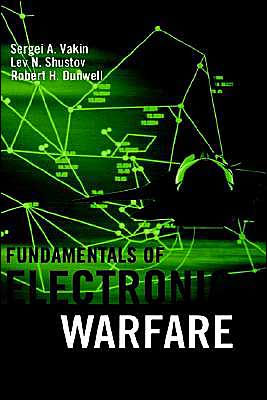5
1
9781580530521


Fundamentals Of Electronic Warfare available in Hardcover

Fundamentals Of Electronic Warfare
- ISBN-10:
- 1580530524
- ISBN-13:
- 9781580530521
- Pub. Date:
- 04/30/2001
- Publisher:
- Artech House, Incorporated
- ISBN-10:
- 1580530524
- ISBN-13:
- 9781580530521
- Pub. Date:
- 04/30/2001
- Publisher:
- Artech House, Incorporated
195.0
In Stock

Product Details
| ISBN-13: | 9781580530521 |
|---|---|
| Publisher: | Artech House, Incorporated |
| Publication date: | 04/30/2001 |
| Series: | Artech House Radar Library Series |
| Pages: | 408 |
| Product dimensions: | 6.00(w) x 9.00(h) x 1.06(d) |
About the Author
From the B&N Reads Blog
